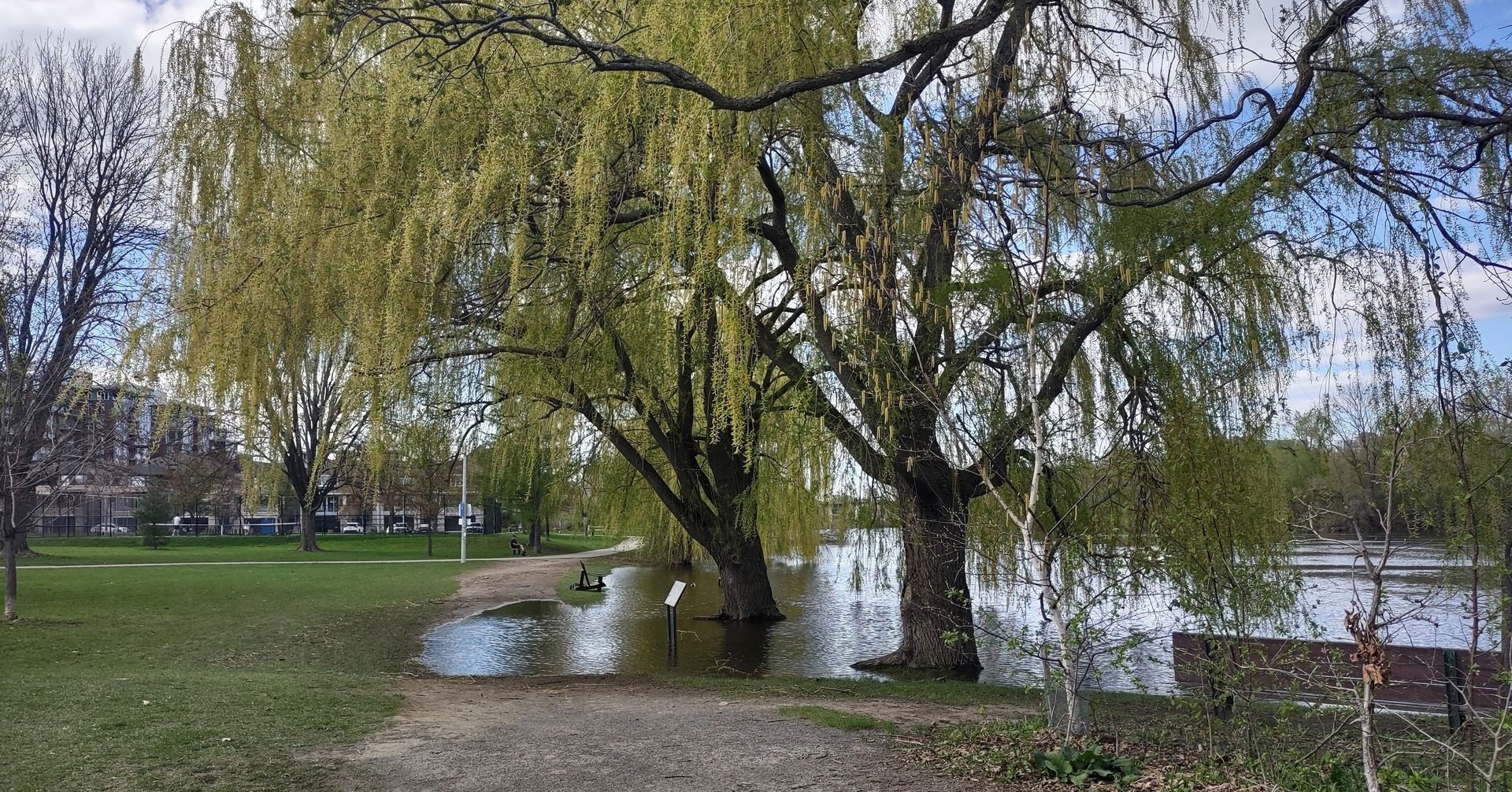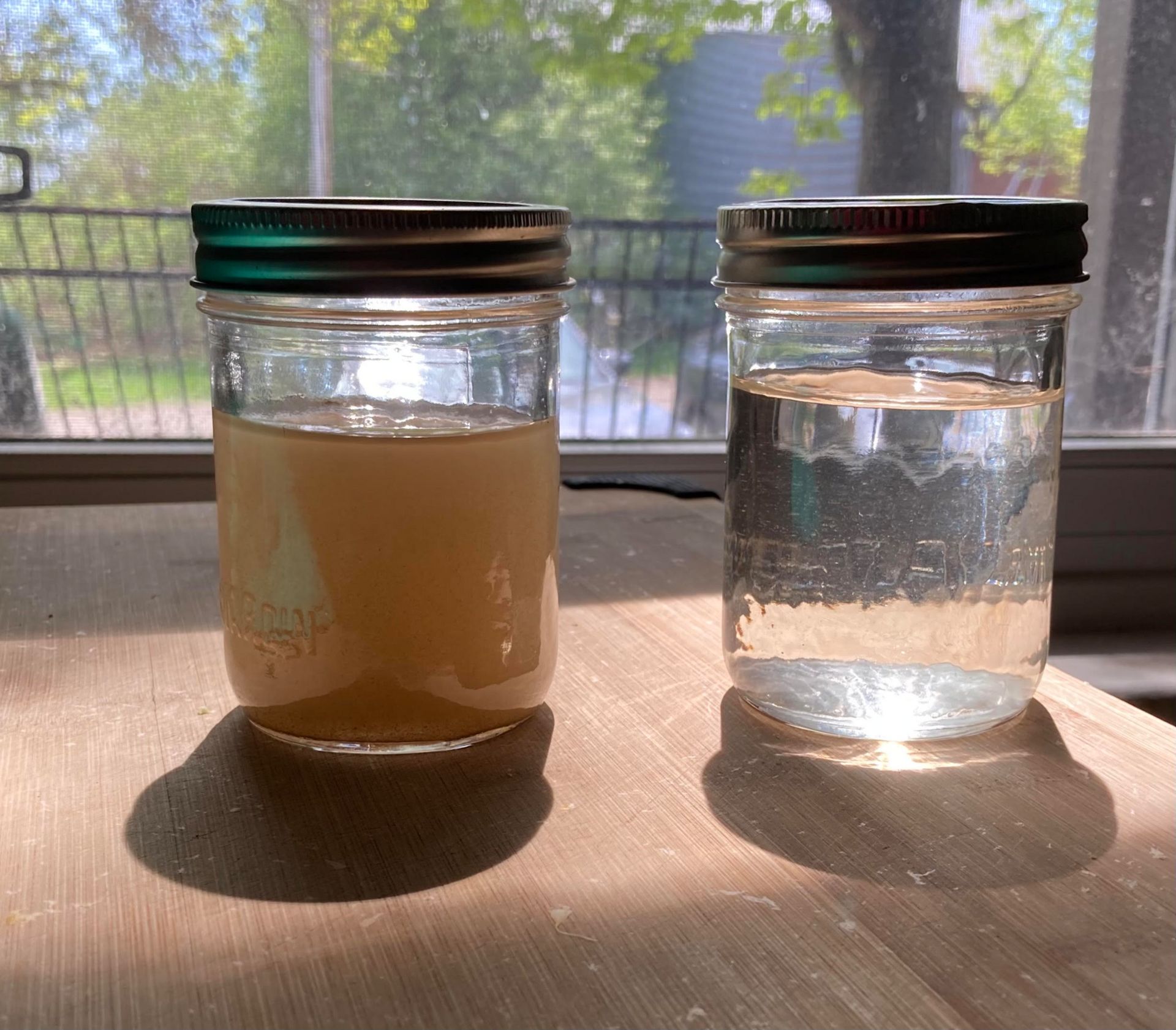- Peace and Environment News
- Posts
- Slow Water Movement is Growing Around the World
Slow Water Movement is Growing Around the World

Image Credit: C. Bonasia
This is a reprint of the latest Watershed Ways column published September 2025 by the Ottawa River Institute, a non-profit, charitable organization based in the Ottawa Valley that aims to foster sustainable communities and ecological integrity in the Ottawa River watershed. You can find it published in Ottawa Life Magazine, here.
Most of us don’t think very much about what happens to rainwater during a downpour, but perhaps we should. How quickly the water runs off the landscape into streams and rivers has major impacts on the health and well-being of our communities.
Natural vegetation in forests, meadows and wetlands reduces the impact of heavy rains, absorbing much of the water that falls on them. Large quantities of rainwater are stored in forest soils. Significant quantities also seep through the soil and replenish groundwater supplies. These moisture reserves help to prevent droughts and lessen the damage of forest fires. During dry periods, deep rooted trees bring moisture up from deep underground and transpire it into water vapour which rises and condenses and then falls back down as rain.
In addition to slowing and absorbing rainwater, forests and wetlands also clean and purify stormwater. Soil fungi are particularly good at detoxifying pollutants that run off from built up areas, recharging streams and aquifers with clean water.
Man-made surfaces such as buildings, parking lots and roads on the other hand, tend to promote rapid runoff of rainwater. Stormwater runoff can carry animal droppings on the ground into lakes and rivers, causing elevated E. coli concentrations and beach closures. Lawns are often not very good at absorbing water during heavy rainfall, especially if the soil under them is hard and compacted. When much of the landscape is covered in impermeable surfaces and less permeable surfaces, heavy rainfall events can result in flooding as torrents of unabsorbed water rapidly flow downhill to low lying areas.
Besides creating landscapes that don't absorb rain very well, we humans have drained wetlands and channelized watercourses to remove water from land targeted for development. These practices have further reduced water retention in our landscapes, leaving the land to dry out more quickly in between rain events.
“Ottawa Valley grass-fed beef farmer Bob Dobson observed the power of slow water first hand during more than five decades of tree planting on his farm near Cobden, Ontario…Over the years, he watched as the farm’s hard clay soil was transformed into a sponge that soaks up water during rains.”
Areas along the shores of streams and rivers are especially important for slowing runoff and filtering stormwater. These areas are known as “riparian zones”. Besides playing an important role in stormwater management, they are ecological hotspots, providing habitat for many diverse species of plants and animals. Unfortunately, shorelines are frequently cleared of vegetation by property owners, sometimes to be replaced by hardened retaining walls that eliminate habitat and increase the rate of runoff into lakes and rivers.
Ottawa Valley grass-fed beef farmer Bob Dobson observed the power of slow water first hand during more than five decades of tree planting on his farm near Cobden, Ontario where he has planted more than 40,000 trees, especially in areas along a stream that crosses his farm. Over the years, he watched as the farm’s hard clay soil was transformed into a sponge that soaks up water during rains. The stream that was intermittent before his planting odyssey,now runs year round, and the water running through it is cleaned by the vegetation and spongy soil as shown in the photo below.

The crystal clear water in the jar on the right was collected after a rainfall from the creek that crosses Bob Dobson’s farm. The murky water in the jar on the left was collected the same day from the same creek crossing an adjacent farm with no tree and shrub plantings along the creek. (Image Credit: Lynn Jones)
There is a growing movement of people around the world who are working to increase the capacity of landscapes to retain and absorb water. This “slow water movement” is restoring the flow of streams that had gone dry in India, bringing back wetlands in North America and Europe, and increasing the soil’s water holding capacity in backyards everywhere. Some of the methods used include creating wetlands, ponds and rain gardens, and replacing hard paved surfaces with permeable asphalt and concrete.
The “Sponge City” movement, pioneered by China 25 years ago, is spreading worldwide. “Sponge Cities” soak up rainfall in specially designed urban parks, gardens, green spaces, wetlands, nature strips, and permeable pavings. Sponge cities save money while alleviating flooding, water shortages, and the urban heat island effect. By 2030, China aims to have sponge city adaptations in place in 80% of its urban space and to recycle at least 70% of rainfall. Many cities around the world are following suit including cities in Canada. Montreal recently announced plans to create more than 30 sponge parks by the end of 2025 and other sponge infrastructure such as permeable sidewalks. The City of Ottawa has a program called “Rain Ready Ottawa” that offers technical support and funding for property owners to install rain gardens and permeable pavements.
We can all be part of the slow water movement here in the Ottawa Valley by planting native trees and shrubs, building up the soil in our yards and neighbourhoods with mulch and compost, diversifying lawns with native plants, depaving, and encouraging wild and diverse riparian zones along watercourses. Let’s make it a priority to hold moisture in the landscape for the benefit of our communities and the ecosystems we depend on.
Reply